Register Now For Adobe MAX 2021
Adobe has opened registration Adobe MAX 2021. It will be held October 26–28, 2021. And once again, it’s virtual and totally free. There will be over 100 live and on-demand sessions and collaborative projects and challenges for attendees to take part in. Confirmed speakers include Writer and Director Chloé Zhao, Filmmaker and YouTube Personality Casey Neistat, Street Photographer Monaris and dozens of others. There will also be musical guests and other breakout sessions throughout the event. Adobe says it will reveal additional details about the speakers and sessions in the coming weeks.
Readability is on the agenda again this year. Important insights will be discussed in two sessions with experts from Adobe and Google, as well as university researchers from Chapman University and The Royal Danish Academy. Register here to start building your schedule now.
One Font Doesn’t Fit All: Type Design and Comprehension
Wednesday, Oct 27 11:30 AM – 12:00 PM EDT
Wednesday, Oct 27 1:00 PM – 1:30 PM EDT
Zoya Bylinskii, Ph D. Research Scientist, Adobe
Dr. Shannon Sheppard, Assistant Professor of Communication Sciences and Disorders, Chapman University
Dr. Sofie Beier, Professor WSR, Head of Centre for Visibility Design, Royal Danish Academy
An innovative interdisciplinary research team recently challenged conventional wisdom by studying how type changes can impact students’ speed of reading comprehension. Explore how type customization matters.
Track: Education
Register here
Creating Value with Personalized Readability Formats
Thursday, Oct 28 12:00 PM – 12:30 PM EDT
Rick Treitman, Entrepreneur-in-Residence, Adobe
Dave Crossland, Lead UX Programmes and Operations, Google Fonts
Sam Berlow, Founder, Typography for Good, Typography for Good
One year ago, Adobe announced the readability initiative, which included establishment of the Virtual Readability Lab at the University of Central Florida. Join Sam Berlow, founder of Typography for Good, and Dave Crossland, lead UX Programmes and Operations Manager, Google Fonts for a discussion.
Track: Graphic Design, Collaboration and Productivity
Register here
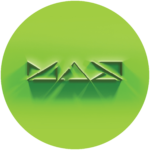 About Adobe MAX
About Adobe MAX
Adobe has announced MAX 2021 – the world’s biggest creativity conference – a no-cost digital experience open to everyone worldwide! The biggest names in creativity and their newest creative cloud release are coming together. Join online Oct 26–28 for a groundbreaking immersive event that stays true to the MAX spirit of mind-blowing creativity and inspiration. Register here.
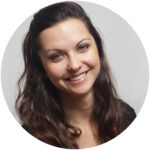 About Zoya Bylinskii Ph D., Research Scientist, Adobe
About Zoya Bylinskii Ph D., Research Scientist, Adobe
Zoya Bylinskii, Ph.D., is a Research Scientist in the Creative Intelligence Lab at Adobe Research as of 2018, and an affiliate at the Massachusetts Institute of Technology. Zoya received her Computer Science Ph.D. and M.Sc. from MIT, and an Hon. B.Sc. in Computer Science and Statistics from the University of Toronto. Zoya works at the interface of human perception & cognition, A.I., and human-computer interaction. Zoya has been actively building a readability research community, composed of perception & cognitive scientists, engineers, designers, and educators.
 About Shannon Sheppard, Assistant Professor of Communication Sciences and Disorders, Chapman University
About Shannon Sheppard, Assistant Professor of Communication Sciences and Disorders, Chapman University
Dr. Shannon M. Sheppard is an Assistant Professor of Communication Sciences & Disorders at Chapman University. Dr. Sheppard is the Director of the Cognition Rehabilitation And Neuroscience In Atypical Language Lab (CRANIAL LAB). She received her PhD in Language & Communicative Disorders from the Joint Doctoral Program at University of California, San Diego and San Diego State University. She completed her postdoctoral fellowship in the Department of Neurology at Johns Hopkins School of Medicine. The overarching aim of Dr. Sheppard’s research is to gain an understanding of brain-language relationships. This informs her work investigating how to improve language and reading comprehension in healthy populations and populations with language and reading impairments.
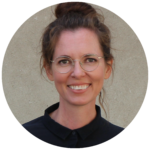 About Sofie Beier, Professor WSR, Head of Centre for Visibility Design, Royal Danish Academy
About Sofie Beier, Professor WSR, Head of Centre for Visibility Design, Royal Danish Academy
Graphic designer and professor WSR Sofie Beier is employed at the Royal Danish Academy, where she is the head of Centre for Visibility Design. She is the author of the books ‘Type Tricks: Layout design’ (2021), ‘Type Tricks: Your personal guide to type design’ (2017), and ‘Reading Letters: designing for legibility’ (2012). She has further published numerous academic papers on typeface legibility. Her research is focused on improving the reading experience by achieving a better understanding of how different typefaces and letter shapes can influence the way we read.
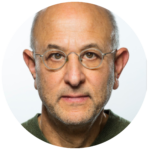 About Rick Treitman, Entrepreneur-in-Residence, Adobe
About Rick Treitman, Entrepreneur-in-Residence, Adobe
Rick started his professional career as a High School English and media teacher and published the first-ever computer-typeset student newspaper in 1975. Rick is currently Entrepreneur-in-Residence (EIR) for Adobe Document Cloud, specializing in Education. Rick’s work as EIR involves early-stage development of tools and solutions for Adobe’s customers. Current projects include readability controls in Acrobat; establishing the Virtual Readability Lab at the University of Central Florida, and working to extend our readability work to a wider collaboration. He was a founder of Virtual Ubiquity (VU), acquired by Adobe in 2007. Virtual Ubiquity created Buzzword, one of the first cloud-based word processors. Prior to VU, Rick was the owner of Softpro Books, a Boston-area technical bookstore chain catering to high tech professionals. He was an early employee of Lotus Development where he had several positions including Director of Product Management and Marketing for various product groups. Prior to Lotus, Rick created the Polaroid Learning Project and early application of technology to the creative classroom. Rick lives in Lexington, MA with his wife, Cantor Louise Treitman. They have three daughters and six grandchildren. When not working, he’s usually on his bike or in the kitchen.
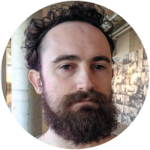 About Dave Crossland, Lead UX Programmes and Operations, Google Fonts
About Dave Crossland, Lead UX Programmes and Operations, Google Fonts
Dave Crossland attended the first Libre Graphics Meeting in 2006, and became fascinated with the potential of libre licensing to improve global design culture. The following year, he enrolled in the University of Reading (UK) MA Typeface Design program to liberate typography. He created the ‘Cantarell’ typeface family as his graduation project, a contemporary humanist sans serif developed for on-screen reading, particularly reading web pages on cheap Android devices. As a lead program manager for Google Fonts, he has commissioned 1,000 of libre fonts from 100s of designers for 10s of writing systems, plus various other projects from font editors to educational resources to live events. The way type design combines visual culture, language, technology, business, history – and its ubiquity – make this field something Dave finds endlessly fascinating.
 About Sam Berlow, Founder, Typography for Good, Typography for Good
About Sam Berlow, Founder, Typography for Good, Typography for Good
Launching Typography for Good (TFG) was a logical next step for Sam who for the last 35 years has had one foot in the world of commercial/professional typography and the other in mentoring and education. Font selection and typesetting are critical elements of effective communication. Acknowledging that all people see and interpret the world differently, TFG’s mission is to make typography accessible and democratic, effective and personalized. Samuel Berlow is a consultant and builder of companies, non-profits, publications, products, and platforms. TFG has been consulting with The Readability Consortium at The University of Central Florida. “The Readability Consortium is the most important initiative I have been a part of during my 35 years in the workforce.” As a father, coach, school board president, and CEO, Sam has seen how critical reading is to the happiness and success of individuals of all ages. “If we can help improve reading by personalizing the presentation of digital documents, we can change the world.”




